Welcome to our comprehensive guide on managing and controlling pests and diseases that affect sweet potatoes. As a sweet potato enthusiast or a gardener looking to cultivate these nutritious tubers, it’s crucial to be aware the potential diseases that may arise. This blog will explore pests and diseases commonly found in sweet potatoes and provide effective treatment and prevention methods.
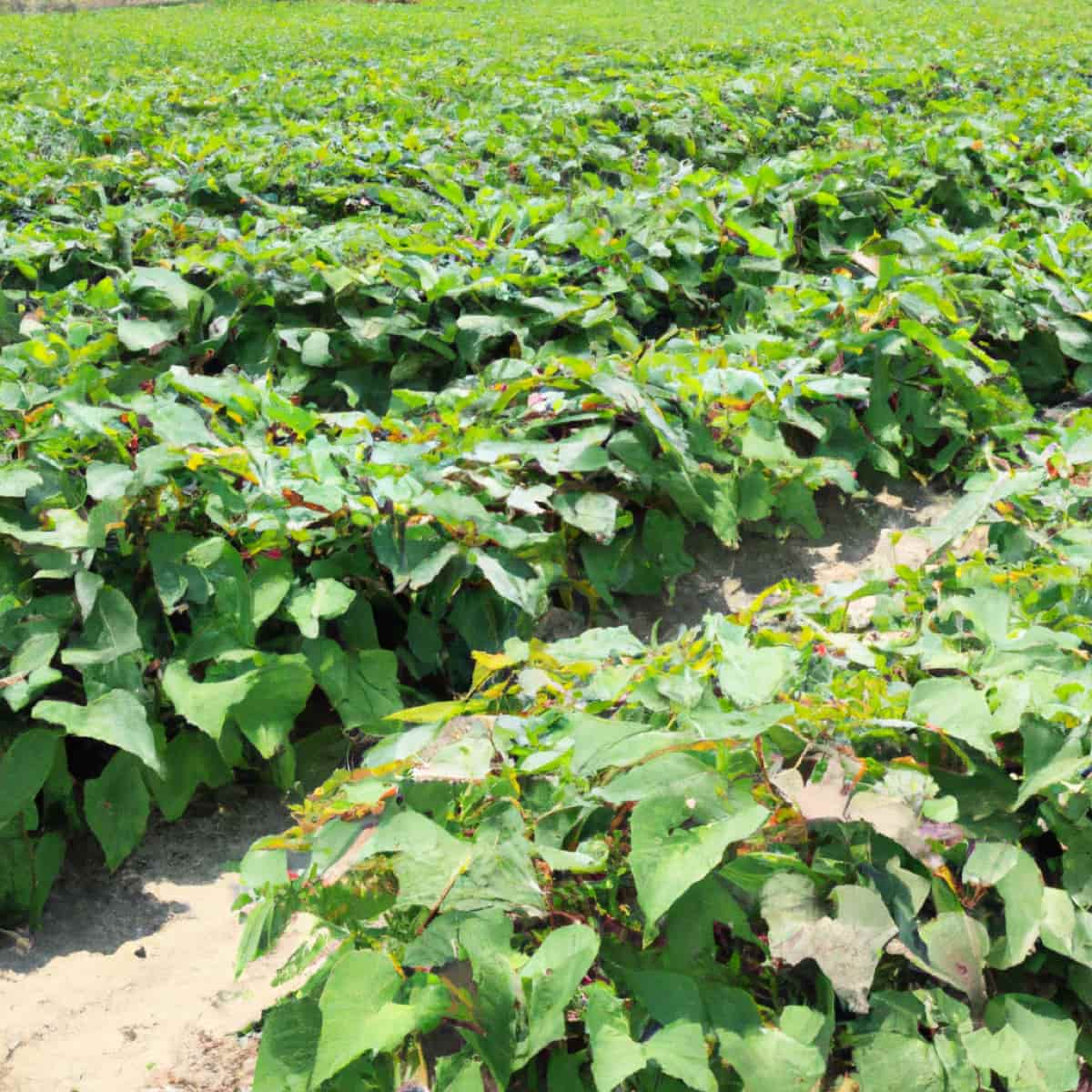
We’ll cover everything from identifying signs of infestation to utilizing organic remedies. Additionally, we’ll discuss cultural practices and companion plants that can help minimize these issues.
How to Treat Sweet Potato Pests and Diseases
Sweet Potato Farming
Sweet potatoes are widely cultivated worldwide, with the largest production areas in Asia, Africa, and the Americas. Regarding total production, China is the leading producer of sweet potatoes, followed by India and Indonesia. These countries benefit from suitable climates and favorable growing conditions. Sweet potatoes are highly valued for their nutritional content, as they are rich in dietary fiber, vitamins, and minerals. They also have a lower glycemic compared to regular potatoes, making them a preferred choice for individuals managing blood sugar levels.
Common Pests and Diseases Affecting Sweet Potatoes: Management and Control
Sweet potatoes can be affected by different insect pests, diseases, and disorders that can impact their growth and productivity. Common insect pests include aphids, cluster caterpillars, flea beetles, mealybugs, weevils, and whiteflies. To manage these pests, monitoring plants regularly, removing affected parts, and using organic or chemical insecticides when necessary is important. Sweet potatoes are also susceptible to diseases such as leaf spots, soft rot, wilt, and scab. Proper sanitation, crop rotation, and disease-resistant varieties can help control these diseases.
In case you missed it: Growing Sweet Potatoes In Containers At Home
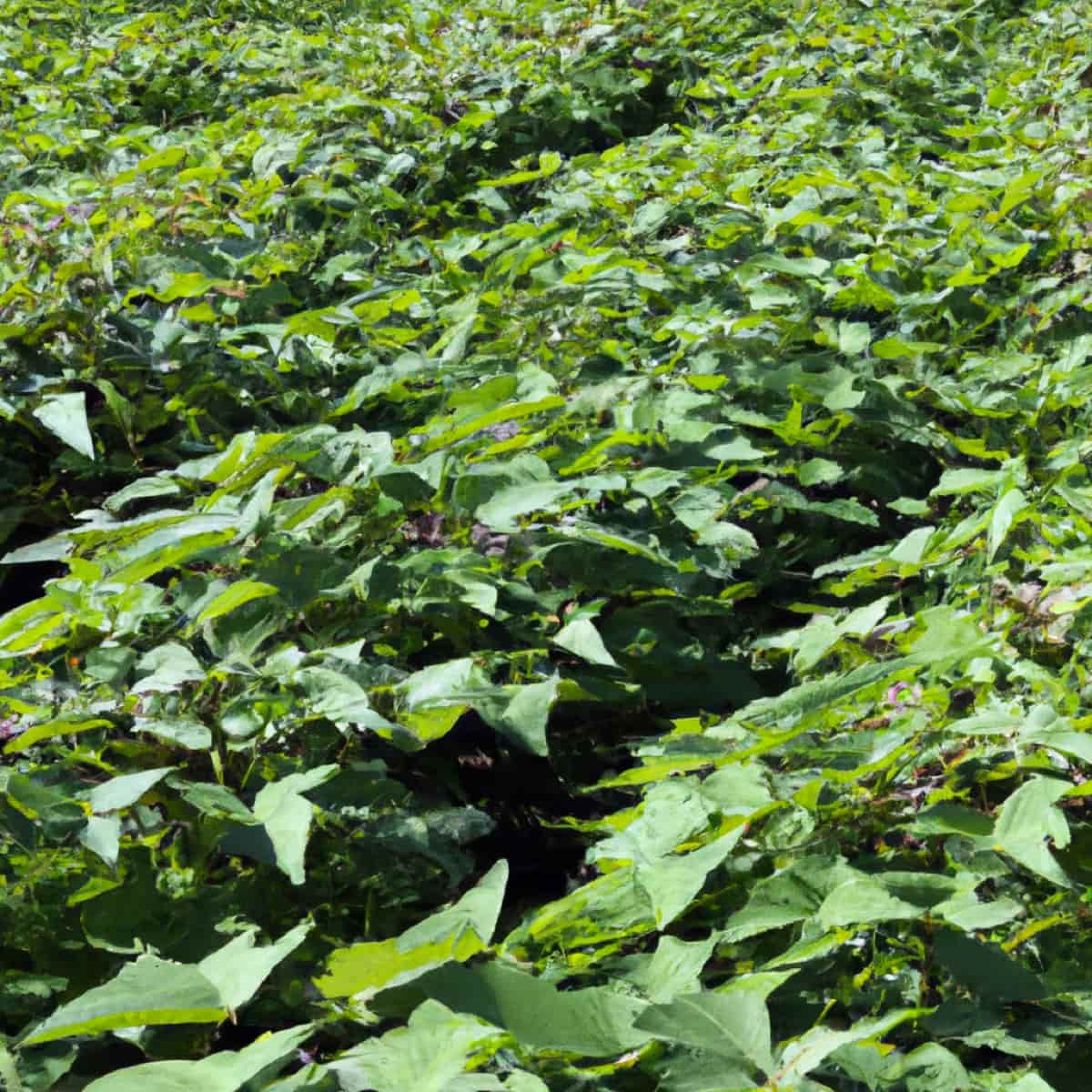
Additionally, sweet potatoes may experience disorders like cold damage, nutrient deficiencies, and growth cracks. Maintaining optimal growing conditions, providing balanced fertilization, and practicing good cultural management techniques can aid in preventing these disorders. By implementing appropriate management and control measures, sweet potato growers can minimize the impact of pests, diseases, and disorders, ensuring healthy and productive crops.
Sweet Potato Weevil Control
Sweet potato weevils can cause significant damage to sweet potato crops. There are two common types of weevils: the West Indian weevil (Euscepes batatae) and the Whitefringed weevil. The West Indian weevil is characterized by legless white larvae growing up to 10mm long. The adult weevils are stout, reddish-brown, less than 4mm long, covered with short bristles.
They feed in groups, chewing into storage roots and causing larger holes than sweet potato weevils. Their feeding results in the production of bitter compounds, rendering the roots inedible. This species is a major pest of sweet potatoes in the Caribbean, Central America, and Papua New Guinea. The Whitefringed weevil larvae are whitish, C-shaped, legless grubs reaching up to 15mm long.
The adults are grey-brown striped weevils with a short snout and a white band along the side. They are flightless but can walk long distances. The larvae reside in the soil and feed on the storage roots, creating shallow, chewed holes. While the West Indian weevil is not yet present in Australia, it is common in Papua New Guinea, particularly during the dry season from May to October. The Whitefringed weevil, on the other hand, lays eggs during the summer, and most damage occurs as larvae mature in winter and spring.
Controlling these weevils requires a combination of management strategies, including regularly monitoring, removing, and destroying infested plants, using certified pest-free planting material, and proper sanitation practices. Insecticides may be necessary for severe infestations, but their use should be done judiciously and in accordance with local regulations.
Sweet Potato Whitefly Management
The silverleaf whitefly, Bemisia tabaci, can challenge sweet potato crops. Nymphs: The first instar nymphs are flat, greenish, and mobile, measuring about 0.3mm in length. As they mature, they become opaque white, stationary, and resemble soft scale insects, but with pointed tails.
- Pupae: Mature nymphs turn golden, their bodies thicken, and their eyes become red.
- Adults: The adults are snow white, approximately 1mm long, with wings held in a peaked position along their bodies.
- Damage: Both nymphs and adults feed on plant sap, leading to yellow or purplish stippling between the veins on leaves. This feeding can stunt growth. Furthermore, whiteflies can transmit certain viruses. Although sweet potatoes are a favored host, the impact on yield is generally minor.
- Most Common: Populations of silverleaf whiteflies can rapidly increase following a mild winter, particularly when temperatures range between 25°C and 28°C. Additionally, whiteflies have shown the ability to develop resistance to many commonly used insecticides, posing challenges for control measures and potentially impacting neighboring crops.
In case you missed it: Top 20 Steps to Boost Potato Yield: How to Increase Production, Size, and Quality
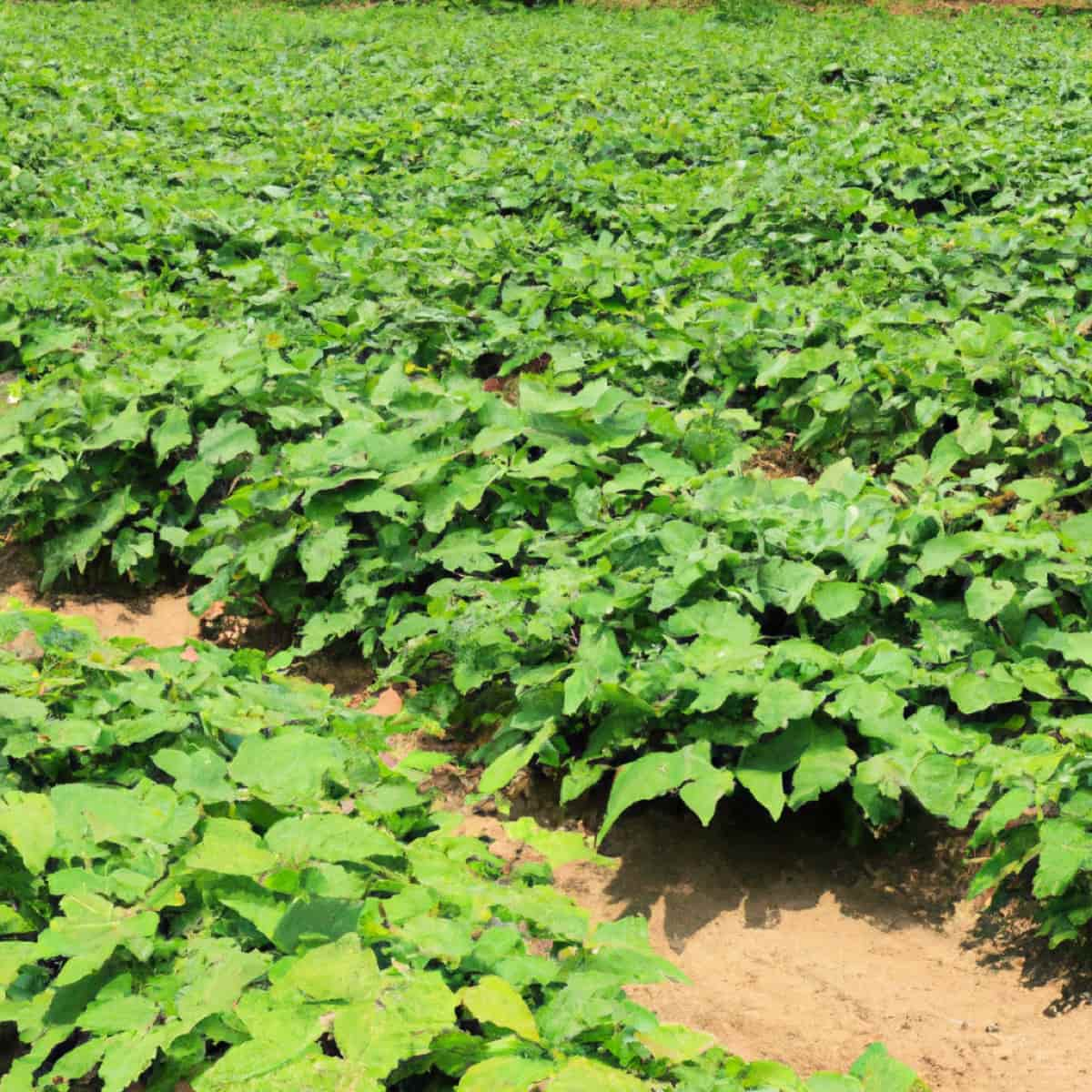
To manage silverleaf whiteflies, integrated pest management practices should be implemented. These include monitoring populations, encouraging natural predators and parasites, implementing cultural controls (such as removing infested plant material), and considering targeted and judicious use of insecticides while following local regulations and resistance management strategies.
Sweet Potato Flea Beetle Treatment
Sweet potato flea beetles, also known as Xenidia sp., can cause damage to sweet potato crops. These small, whitish grubs live in soil, while adult beetles are black, 3mm long, and have powerful hind legs. Larvae feed on storage roots, creating shallow channels, while adults feed on leaves, causing holes and defoliation.
Most common in spring, these beetles are most commonly found. To treat infestations, integrated pest management practices should be followed, including regular monitoring, cultural controls, promotion of beneficial insects, and targeted insecticides. Consult local agricultural extension services or experts for the most effective and appropriate treatment options.
Sweet Potato Wireworm Prevention
Preventing wireworm infestations is important for protecting sweet potato crops. False wireworm larvae, known as ‘click’ beetles, are creamy-colored, segmented, and soft, with a brown head and large mandibles. Adults are grey to brown, torpedo-shaped beetles up to 15mm long. Implement crop rotation, soil preparation, trap crops, biological controls, and regular monitoring to prevent false wireworm damage.
Rotating sweet potatoes with non-host crops disrupts wireworm life cycles and reduces their population. Biological controls encourage natural predators like ground beetles and parasitic nematodes while monitoring fields for wireworm activity helps identify infestations early and take appropriate measures.
Sweet Potato Black Rot Control
Sweet potato black rot is a fungal disease caused by Ceratocystis fimbriata. To control and manage this disease, use planting-resistant varieties, practice good sanitation by removing and destroying infected plant debris, and implement a crop rotation system. Start with disease-free, certified seed material and inspect it carefully for signs of black rot.
Ensure proper soil drainage to prevent waterlogging, which can create favorable conditions for disease development. In severe cases, use registered fungicides for black rot control, consulting with local agricultural extension services for appropriate options and usage guidelines.
In case you missed it: Fertilizer Management in Potatoes: Organic, Compost Manure, NPK, and Schedule

Sweet Potato Scurf Treatment
Scurf is a fungal disease of sweet potatoes caused by Monilochaetes infuscans. Symptoms: Scurf is characterized by the development of dark brown to black discolored areas on the storage roots. These areas enlarge and can eventually cover the entire surface of the root. It’s worth noting that the sweet potato’s internal tissues are unaffected by the disease.
- Favored Conditions: Scurf occurs more frequently in alkaline to neutral soils and is rare in acidic soils. Outbreaks are more likely to happen in wet soils with high organic matter content.
- Treatment: Specific treatments cannot eliminate scurf from infected sweet potatoes. However, management practices like crop rotation, sanitation, and soil pH adjustment can help minimize its impact. Crop rotation reduces pathogen buildup in soil, while sanitation removes and destroys infected debris. pH adjustment to slightly acidic levels (around pH 6) may reduce disease severity in alkaline to neutral soils.
Sweet Potato Root-knot Nematode Management
Root-knot nematodes, belonging to the Meloidogyne spp., can cause severe damage to sweet potato crops. Nematodes are microscopic, wormlike organisms measuring less than 1mm in length, making them rarely visible to the naked eye. They reproduce in the soil and parasitize plant roots.
Damage: Root-knot nematodes primarily affect sweet potatoes during early root development. The juveniles hatch from eggs in the soil, penetrate plant roots, and establish permanent feeding sites. This leads to the formation of swollen cells, forming blisters on the roots. Additionally, the roots may become malformed, cracked, or have a rough appearance. Infected plants often exhibit yellowing of upper parts and wilting.
Most Common: Root-knot nematodes are more prevalent in sandy soils. Warm environments above 25°C increase symptoms, and major egg hatching occurs during spring. Nematodes can be spread through irrigation water, machinery, and infested plant material. Therefore, maintaining farm hygiene and implementing crop rotation practices are important control methods.
Management: Effective management of root-knot nematodes involves crop rotation, sanitation, soil amendments, and nematicides. Rotating sweet potatoes with non-host crops reduces nematode populations while removing and destroying infested plant material prevents spread. In severe cases, nematicides may be used according to guidelines.
Sweet Potato Leaf Spot Control
Leaf spots caused by Alternaria spp. can affect sweet potato plants. Small brown spots with a characteristic yellow or reddish halo develop on the leaves. The centers of the lesions become dry and papery, eventually leading to their falling out. Leaf spot rarely causes significant production loss.
Favored Conditions: The disease is most serious when alternating dry and wet periods occur during the cropping season, such as when overhead irrigation is used. Optimal growth of the fungus occurs at around 27°C. Crop debris provides a favorable environment for the fungus to thrive. Spores can spread through wind, rain, and water.
In case you missed it: Growing Organic Sweet Potatoes – Planting, Farming, Tips, Ideas
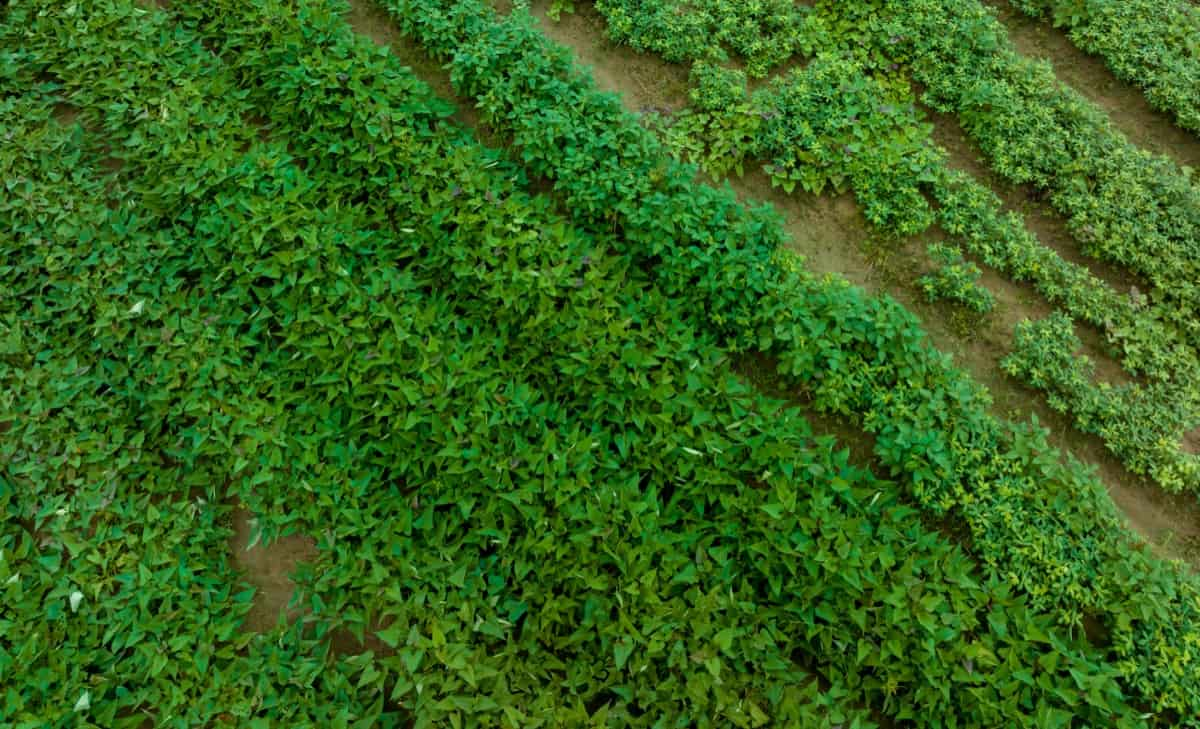
Management: To manage sweet potato leaf spots, follow these control measures: sanitation, irrigation management, fungicides, and crop rotation. Sanitation involves removing infected plant debris to reduce the pathogen’s source. Irrigation should be avoided, using drip irrigation or other targeted methods. Fungicides registered for leaf spot control can be used in severe cases, but consult with local extension services for appropriate options and usage guidelines. Crop rotation disrupts the disease cycle and reduces pathogen buildup in the soil.
Sweet Potato Stem Rot Treatment
Stem rot is a fungi causing disease that can damage sweet potato plants, causing wilting, rotting, and collapse. Fungal pathogens like Rhizopus stolonifer and Fusarium spp cause it. Treatment is difficult, and prevention and early detection are crucial. Practices to reduce stem rot risk include crop rotation, sanitation, proper drainage, and fungicide applications.
Crop rotation breaks the disease cycle, while sanitation removes and destroys infected plant material. Proper drainage prevents waterlogging, creating favorable conditions for fungal growth. In severe cases, fungicides may be used preventively, following recommended guidelines and regulations.
Sweet Potato Aphid Prevention
Preventing aphid infestations is needed for maintaining healthy sweet potato crops. Aphids, like the cotton aphid (Aphis gossypii), have various appearances depending on their life stage. They feed on young shoots, extracting sap, causing leaf distortion and stunting. Their excreted honeydew can lead to sooty mold growth, reducing photosynthesis and transmitting feathery mottle virus.
Most common, aphid populations thrive in cool, dry conditions, with females producing multiple live offspring daily. To prevent aphid infestations, consider monitoring sweet potato plants for signs of aphid presence, encouraging natural predators like ladybugs, lacewings, and parasitic wasps, using reflective mulch, applying insecticidal soap, and planting companion plants that repel aphids like marigolds or catnip.
Sweet Potato Bacterial Wilt Management
Bacterial wilt, caused by Erwinia spp., can cause significant damage to sweet potato plants. Symptoms include wilting and collapse, with storage roots developing a wet, slimy rot and unpleasant smell. Infection occurs through injuries caused by pest damage during field cultivation or harvest. Effective management involves sanitation, certified disease-free planting material, pest control, and proper harvesting techniques. These measures help prevent bacterial entry and minimize damage to sweet potato plants.
Sweet Potato Leaf Curl Virus Prevention
Reducing the spread and impact of the sweet potato leaf curl virus, caused by the potyvirus feathery mottle, is crucial for maintaining healthy sweet potato crops. Symptoms of the virus vary depending on the variety, plant age, and growing conditions. Common signs include irregular mottled spots on leaves, further discoloration along veins, reduced vigor, thin, elongated storage roots, and severe infection.
The virus is widespread and transmitted through infected planting material and aphids. To prevent the spread of sweet potato leaf curl virus, consider using certified Virus-Free Planting Material, implementing aphid control strategies, regularly inspecting crops and removing any showing virus symptoms, practicing good field hygiene, and implementing a crop rotation system. By following these measures, you can help prevent the spread and impact of the virus on your sweet potato crops.
Sweet Potato Tuber Rots Management
Tuber rots, caused by Fusarium solani, are essential for maintaining the quality and marketability of sweet potatoes. They present as shriveled, sunken lesions on the roots, often forming irregularly shaped brown rings. Infection occurs through wounds, especially during harvesting, making proper handling and minimizing mechanical damage crucial.
In case you missed it: Sweet Potato Fertilizer Requirements and Recommendations: Management Practices for Optimal Yield
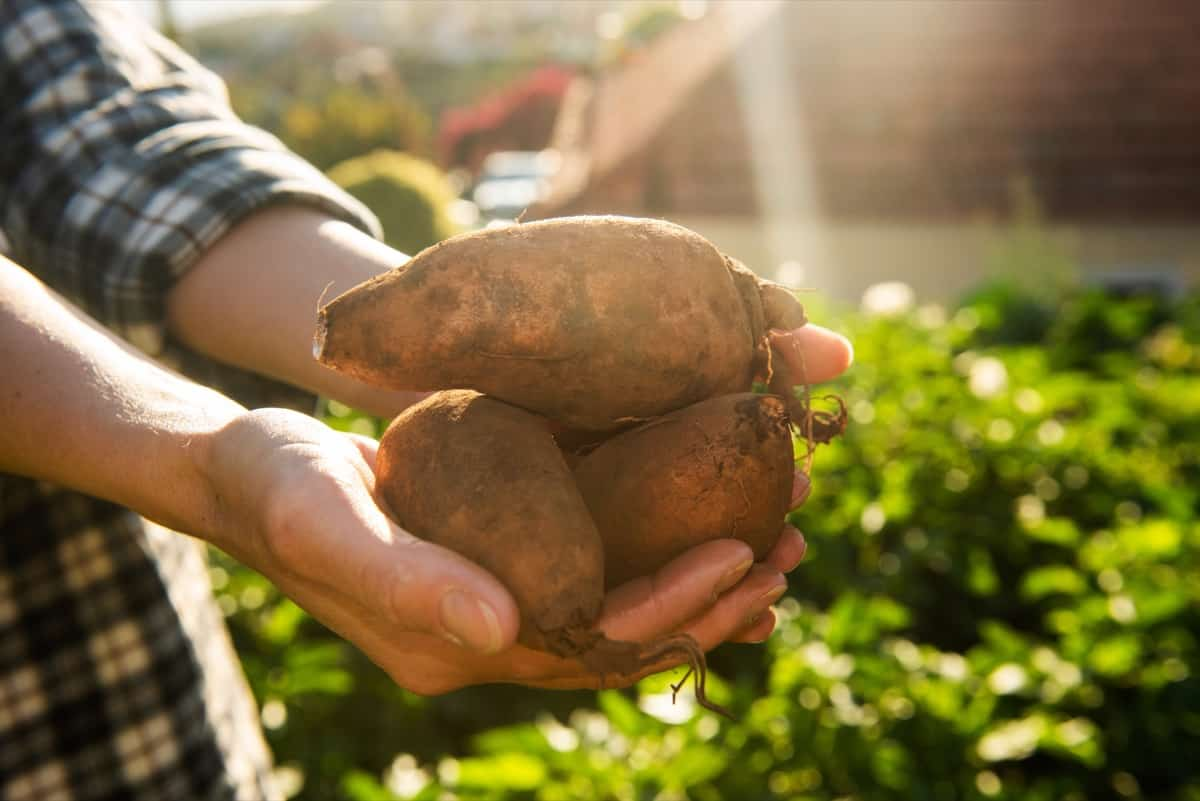
To manage tuber rots, follow proper harvesting, post-harvest handling, sanitation, and use disease-free planting material from reliable sources. Proper harvesting minimizes wounds and mechanical damage, while post-harvest practices, sanitation, and disease-free planting material prevent the spread of the disease within storage facilities.
Conclusion
Effective management and prevention strategies are vital in mitigating the impact of pests and diseases on sweet potato crops. Proper sanitation, crop rotation, disease-free planting material, and targeted control measures are essential for maintaining healthy and productive sweet potato plants.
- Types of Pesticides Used in Agriculture: A Beginner’s Guide
- Economical Aquaculture: A Guide to Low-Budget Fish Farming
- 15 Common Planting Errors That Can Doom Your Fruit Trees
- How to Make Houseplants Bushy: Effective Tips and Ideas
- Innovative Strategies for Boosting Coconut Pollination and Yield
- Pollination Strategies for Maximum Pumpkin Yield
- The Complete Guide to Chicken Fattening: Strategies for Maximum Growth
- Natural Solutions for Tulip Problems: 100% Effective Remedies for Leaf and Bulb-Related Issues
- Revolutionizing Citrus Preservation: Towards a Healthier, Greener Future
- Natural Solutions for Peony Leaf and Flower Problems: 100% Effective Remedies
- Maximizing Profits with Avocado Contract Farming in India: A Comprehensive Guide
- Natural Solutions for Hydrangea Problems: 100% Effective Remedies for Leaf and Flowers
- The Ultimate Guide to Choosing the Perfect Foliage Friend: Bringing Life Indoors
- From Sunlight to Sustainability: 15 Ways to Use Solar Technology in Agriculture
- The Ultimate Guide to Dong Tao Chicken: Exploring from History to Raising
- The Eco-Friendly Makeover: How to Convert Your Unused Swimming Pool into a Fish Pond
- Mastering the Art of Delaware Chicken Farming: Essentials for Healthy Backyard Flocks
- 20 Best Homemade Fertilizers for Money Plant: DIY Recipes and Application Methods
- How to Craft a Comprehensive Free-Range Chicken Farming Business Plan
- Brighten Your Flock: Raising Easter Egger Chickens for Beauty and Bounty
- How to Optimize Your Poultry Egg Farm Business Plan with These Strategies
- Subsidy for Spirulina Cultivation: How Indian Government Schemes Encouraging Spirulina Farmers
- Ultimate Guide to Raising Dominique Chickens: Breeding, Feeding, Egg-Production, and Care
- Mastering the Art of Raising Jersey Giant Chickens: Care, Feeding, and More
- Ultimate Guide to Raising Legbar Chickens: Breeding, Farming Practices, Diet, Egg-Production
- How to Raise Welsummer Chickens: A Comprehensive Guide for Beginners
- How to Protect Indoor Plants in Winter: A Comprehensive Guide
- Ultimate Guide to Grow Bag Gardening: Tips, Tricks, and Planting Ideas for Urban Gardeners
- Guide to Lotus Cultivation: How to Propagate, Plant, Grow, Care, Cost, and Profit
- Agriculture Drone Subsidy Scheme: Government Kisan Subsidy, License, and How to Apply Online
- Ultimate Guide to Raising Araucana Chickens: Breed Profile, Farming Economics, Diet, and Care
- Bringing Hydroponics to Classroom: Importance, Benefits of Learning for School Students
- Ultimate Guide to Raising Polish Chickens: Breed Profile, Farming Economics, Diet, and Care
- Ultimate Guide to Raising Australorp Chickens: Profile, Farming Economics, Egg Production, Diet, and Care
- Silkie Chicken Farming: Raising Practices, Varieties, Egg Production, Diet, and Care
- Sussex Chicken Farming: Raising Practices, Varieties, Egg Production, Diet and Care